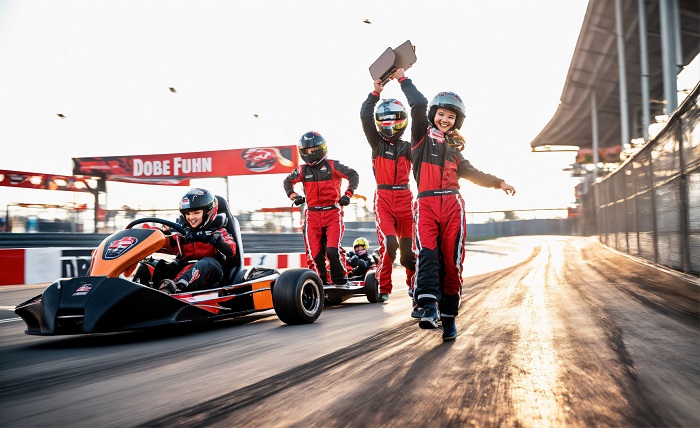Grand prix Sunday begins before dawn. The paddock wakes, freight boxes open, and a traveling factory snaps into shape. Every task has a timestamp, every role a checklist, and every decision repeats until muscle memory replaces doubt. The goal is simple: prepare two cars for the grid and carry both to the flag with the best possible result.
Strategy talk borrows gaming language for clarity. Risk ladders and tiny swings of fortune exist in a big small casino game and on a race map, yet race day replaces luck with data. Setups reflect simulations, tyre choices balance grip against degradation, and contingency plans wait for safety cars and weather. The clock becomes the true opponent.
Garage Wake-Up: From Cold Carbon to Live Car
The garage hums with compressors and laptops. Mechanics torque critical fasteners, hydraulics get bled, and power units warm to targets. Engineers compare overnight telemetry with morning conditions, then align settings with parc fermé rules. Seat fit, radio checks, and brake blanking adjust to ambient temperature so first laps neither cook discs nor leave them cold.
Checklist at Ignition: The Early Sequence
- Systems fire and sensor scan: Control units boot, error flags clear, and redundant paths confirm healthy power delivery.
- Fuel mass planning: Start weight balances safety car probability and lift-and-coast targets.
- Tyre prep and blankets: Pressures and camber align with forecasted track evolution and grip windows.
- Wing angles and balance: Load split suits turbulence in traffic and clean air.
- Practice starts and clutch bite: Launch maps calibrate at pit exit to avoid wheelspin or bog on the grid.
All that compresses into a calm rhythm. Hospitality and media build noise outside; inside, the metronome holds. When reconnaissance opens, the car glides out and the crew flips from preparation to surveillance, watching temperatures, differential targets, and energy harvest from the first meters.
Grid Procedure and Formation
On arrival the car reaches a marked slot, cooling fans spin, tyre blankets hug rubber, and the drink line is checked. Strategists confirm start compounds and sketch pit windows around expected traffic. Spotters read clouds for a late switch to intermediates. The formation lap becomes a rolling quality check: build brake energy, scrub tyres, confirm radio clarity.
The start sequence compresses everything into seconds. Rev targets, clutch position, and release timing set the first meters. A good launch locks clear air or a safe tow; a poor one invites wheelspin, dirty air, and stressed tyres by turn three. Race pace begins with that bite point.
The First Phase: Managing Heat, Grip, and Ego
Opening laps demand restraint and conviction. Cooling flows worst in traffic, so lift points and alternate lines keep fluids in range. Tyre slides spike temperatures and can wreck a stint, so duels are chosen carefully while energy harvest builds for a measured attack. The pit wall maps undercuts and overcuts against rival pace, watching sector deltas to predict when a stop pays.
Pit Wall Playbook: Real-Time Calls
- Undercut trigger: Box when clear air appears and tyre life supports an out-lap push.
- Overcut gamble: Stay long if front grip holds and rivals emerge into traffic.
- Double-stack choreography: Two cars pit on one lap when gaps allow clean service.
- Safety car leverage: Take the cheapest stop, switch compounds, reset fuel targets.
- Virtual safety car discipline: Hit delta precisely to bank free time without penalties.
Those moves look daring from the grandstand but feel clinical on the stand. The smartest call often slips a car past a rival without a wheel-to-wheel fight. Tyre life becomes currency for the middle phase, with fuel targets nudged to prioritize straights or cooling as traffic dictates.
Pit Crew Craft and Margins
In-lap precision builds free time. Brake release at the limiter line, crisp box placement, and perfect wheel nut alignment give the crew a fair shot at sub-three seconds. A clean launch needs spotless paths and vigilant lights so no rival occupies the blind spot. Any delay compounds into traffic loss worth more than half a second at the gun.
Out laps demand discipline. Tyres leave below peak temperature and pressure, so kerb usage softens, wheelspin is managed, and energy deploys on exits until rubber wakes fully. The voice on the radio balances instruction with silence so focus stays on braking points and apex rhythm.
The Final Phase: Reading a Race That Refuses to Sit Still
Late stints bring frail tyres, heavy fuel history, and weather teases. A chaser protects front grip for one clean attempt; a defender paces battery and avoids mirror driving that overheats the rear axle. Lapped traffic adds texture, and blue flags become opportunities or traps depending on timing.
Post Flag: Data First, Champagne Later
Parc fermé returns the car to the rulebook. Weight checks, tyre samples, and software seals protect fairness. Debrief starts immediately. Engineers compare predicted degradation with reality, plot brake temp outliers, and tag balance shifts from wind or traffic. Pit stop video gets reviewed to tighten choreography for the next round.
The day ends as it began: list discipline, quiet craft. A grand prix team wins the most by removing variables. Preparation shrinks unknowns, calls exploit the small windows that remain, and execution keeps a season alive across circuits and climates. Under the noise sits a clock, a checklist, and a group that respects both.
